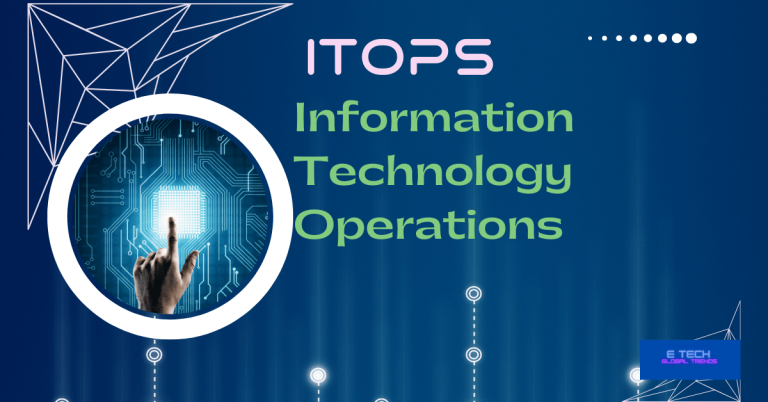Qiskit: latest SDK insights
Hello friends, today we are going to impress you with an interesting topic. That is Qiskit. Not a “Kiss kit”. Maybe something like that! Well, ok, what is really Qiskit? IBM presents this as an open-source quantum computing software development kit. The research streamlines some aspects of quantum computing application code. Users can directly program quantum computers using their programming equipment.” Quantum Computing Goes Commercial” includes here. So, “Qiskit: latest SDK insights” information will help you. Let’s get into reading…
thanks to this SDK.
This potentially enables anyone;
- create quantum circuits,
- execute quantum algorithms, and
- research numerous quantum phenomena.
Is Qiskit trending?”Qiskit: latest SDK insights”
Yes, why not? A growing number of businesses are attempting to commercialize quantum computers. even though they are not yet a useful technology. For instance, Google 2029, expects to deliver A commercial quantum computer.
Additionally, they are exploring now applying quantum computing to their daily operations. companies like Volkswagen, Visa, and Goldman Sachs. According to Gartner, By 2025, 40 % of medium-sized to large enterprises will start using quantum computing. That’s a pretty fair assumption.
Not only that.
$1 trillion business over the next 10 years, is going to generate quantum computing. By calculating trending commercialization according to a Honeywell prediction.
Sure, we will get into the discussion. And will start from the basics. Then anybody can understand. so it’s really nice to know “Qiskit: latest SDK insights”.
Well First;
What does SDK mean?
Software Development Kit. is what it stands for. The SDK is sometimes able to say to a Devkit. IBM offers this. It is a collection of software-development tools for a particular platform. That often consists of a framework. or collection of code libraries.
such as;
- a set of operating system-specific procedures
- building blocks
- debuggers (OS)
What are the important things in the SDK toolkit?
Any or all of the following resources are available in a standard SDK toolkit; “Qiskit: latest SDK insights”
- Compiler: converts one programming language into the one you’ll be using.
- Sample codes: Give a specific example of an application or website in version 2.0 of the code.
- Code libraries: (frameworks): Offer a shortcut with code snippets that programmers will frequently use
- Testing and analytics techniques: Give information on how the program or product works in both testing and production settings.
- Documentation: Provides developers with guidelines they can consult as they work
- Debuggers: Assist teams in locating faults in existing code so they may release code that operates as intended.
The SDK frequently also has just one API because, without it, applications cannot exchange data or cooperate.
We are not going to teach you coding. With step by step manner. But this presentation will make a fair understanding. Of course, coding is not an interesting job.
Useful aspects of SDK
software engineers develop For certain software frameworks, hardware platforms, operating systems, and software packages. In general, SDK refers to the SDK used to create Windows-based apps. Application programming interface (API) files for a programming language can serve as the basis for it. but it can also incorporate sophisticated hardware that can interact with embedded systems. Utilities for debugging and other uses are examples of common tools.
Additionally, SDKs frequently offer example code, technical notes, or other supporting documentation that answers queries about fundamental reference materials.
Many SDKs have no restrictions on encouraging programmers to utilize their platforms or languages. As a marketing strategy, software engineers frequently purchase software development kits from the creators. for their intended target systems or sometimes, directly download them from the Internet.
Are SDKs really beneficial?
Yes, this is the reason why SDKs are trending and getting popular. By offering the following, SDKS facilitates developers’ work in a few ways.
- Integrations go more quickly and smoothly; because SDKs make it easier to acquire the necessary information and streamline typical operations
- Access to the instructions and component parts for software development: Consider a retail SDK that incorporates everything you need for your app (e.g., favorites, cart, save for later, checkout, etc.).
- Accelerated product deployment and market entry, shorter product development cycle: Developers can concentrate on creating the planned product because an SDK is designed to educate, equip, and offer development shortcuts.
- Built-in support and expertise: You won’t need to look for solutions or recruit outside help to expand your team because SDKs already have pre-written code that has been produced by experts, as well as support documentation.
- Cost management: All of the aforementioned help you more closely stick to a predetermined budget both during development and after deployment.
So, it’s pretty understandable why SDKs are useful. You may notice that Qiskit also meets these insights respectively.
How does SDK get into work?
It will be easy to catch. If we clarify like this…
They are sets of downloadable software development tools that are often used to create mobile applications or to enhance already-existing apps by adding new features or capabilities.
The most popular categories for mobile SDKs:
Here is the same case but in a different approach used for the mobile side.
- Ad Network: These are mobile advertising systems that let developers add in-app advertisements to their apps and games to monetize them.
- Analytics: These assist programmers in gathering, setting up, and analyzing app data (essential things like crashes, user behavior, user attention, etc.).
- Business Automation; For managing push notifications, in-app messaging, SMS, emails, and other aspects of digital marketing, use marketing automation.
- Data intelligence: This term frequently relates to location intelligence SDKs, which give programmers access to user location data. They can thus be utilized to provide users with location-based real-time notifications.
- Attribution: By providing conversion statistics from user acquisition and retention initiatives, assist marketers in monitoring the effectiveness of their marketing campaigns.
- Commerce: These aid in the facilitation of in-app billing, purchases, and payments. (Consider Stripe, Google Play In-app billing, PayPal, etc.)
- Digital communication: Push notifications, instant messaging, telephones, and other forms of digital communication can incorporate into apps thanks to them.
- Backend: These make it simpler for developers to connect their programs to cloud-based storage, making it possible to connect with software development kits and APIs. Consider Amazon AWS.
- CRM: CRM stands for customer relationship management, and app developers can use CRM SDKs to implement CRM strategies in their mobile applications.Social: These can be used to integrate various components of social media platforms, such as analytics capabilities, secure logins, post sharing, and other social networking features, into mobile apps.
Did you read correctly? If yes, you can see some awesome aspects of mobile SDKs.
Well, we move on to check whether an API similar to SDK. is it API and SDK have similar work? No, there are differences. But it has nearly the same concept.
What is really an API?
Application Programming Interface is what an API is. These procedures, guidelines, and resources are used to create software programs. It details how software parts should communicate with one another.
An API is a collection of coding directives that define how one piece of software can communicate with another. It is an agreement between two pieces of software outlining how they will cooperate. Software applications can be improved or new ones can be developed using an API.
The ability to construct new apps without being to start fresh is one of the reasons why an API is crucial. It also makes it possible to add new features to already existing applications.
There are several uses for an API. It can apply to;
- develop fresh applications.
- Applications can upgrade with new functionality,
- or they can communicate with one another.
Whatever programming language is used! it is possible to create an. But C++ or Java is the language used for the majority of APIs.
In essence, you are using another code when you utilize an API. Both good and terrible things may result from this. You can save time and work, thus it’s a good thing. The reason it’s problematic is that you’re depending on someone’s code. which can be flawed or poorly designed.
So then what is better API or SDK?
That has to understand in this manner. In actuality, as mentioned before, an SDK frequently includes one API. These two support you in various ways, but they may and often do combine.
Again, APIs define the interoperability of many platforms. They function as facilitators and one of the instruments in a set of tools for interaction via specifications (protocols).
The full kit is an SDK. They supply everything needed to construct new software for a certain platform or programming language, even though facilitation is a part of what they do.
Always be conscious of the hazards involved while using an API. To be sure you are performing what is expected of you, you should carefully review the instructions.
A valuable tool for software engineers is an API. saves both time and effort. It is a fantastic method to improve already-existing applications. Prior to employing one. just be sure you are aware of the risks.
Conclusion “Qiskit: latest SDK insights”
In this way, we were trying to make you understand that the SDKs of Qiskit are ready to solve many issues of software development. If you are interested to do so. Why not? It’s time to make an effort. And this article focuses only on SDK facts. So if you want to implement projects, please check here for tutorials.
Read more on related articles Blazor: free software project, Time is LTD: trending Saas platform







